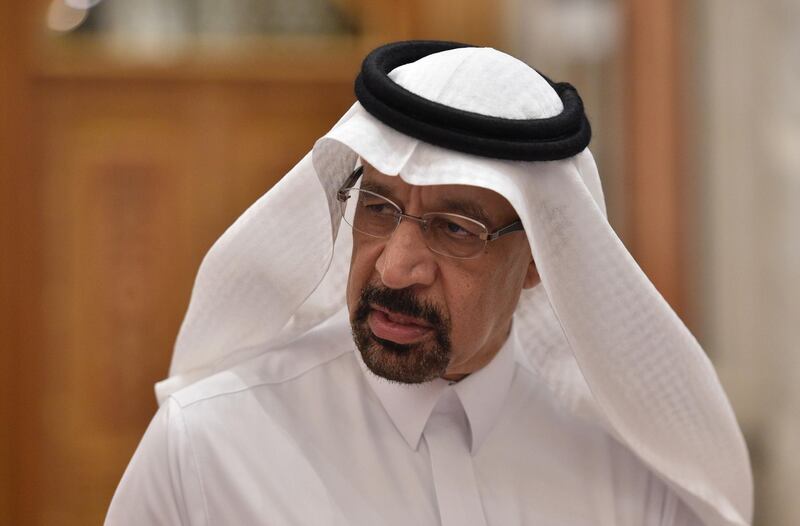Saudi Arabia does not rule out boosting its crude production by up to 2 million barrels per day (bpd), pushing the country to maximum capacity, as the world’s biggest oil exporter seeks to assure markets of its ability to ramp up output quickly to meet demand or cope with supply disruptions.
“I think we are in a good place today in terms of supply-demand balance and inventories,” Khalid Al Falih, the kingdom's oil minister told delegates at the opening of the three-day Future Investment Initiative conference taking place in Riyadh on Tuesday.
“I would not rule out the kingdom’s production, which has been 9 million to 10 million bpd over the last decade or so, would be 1 million or 2 million [bpd] higher.”
Saudi-led Opec and Russian-led members of a global oil pact are increasing production, reversing a deal that was implemented in January 2017 to curb output by 1.8 million bpd in a bid to prop up prices and balance the market. Oil prices have jumped over 40 per cent since January last year thanks to the global oil cuts and more recently concern about dwindling production from major oil producers, including Iran.
______________
Read more:
[ Saudi Arabia has no intention of repeating 1973 oil embargo, minister says ]
______________
Opec, which is slated to meet in December, is seeking to extend the global oil pact and attract more countries to help stabilise the market, said Mr Al Falih.
“Procedurally, what we are hoping to do in December is to ink an agreement amongst at least 25 countries that are signatories to the current agreement and hopefully more countries will join,” said Mr Al Falih.
Saudi Arabia, which is currently producing below its maximum oil production capacity of 12 million bpd, has assured markets it can ramp up its output to fill supply gaps in the market, which is being tested by disruptions in key Opec producers Venezuela and Iran. Tehran is forecast to suffer from further declines in oil production and exports as the November 4 deadline for the US re-imposition of sanctions on its energy industry looms.
Mr Al Falih said there is a global need to invest in spare oil capacity to meet market demand in case of disruptions to supply.
“What we need to decide, depending on the global landscape of how energy is managed, to invest in the significant spare capacity of 2 million [bpd],” said Mr Al Falih
Saudi Aramco, the world’s biggest oil producing company, can boost production to 12 million bpd within three months if it is needed, its chief executive Amin Nasser told the conference on Tuesday.
“We have to continue to monitor the market in the next two to three months and in January and beyond we will decide if there are disruptions from supplies, especially with the Iran sanctions looming,” said Mr Al Falih. “Then we will continue with the mindset we have, which is to meet any demand that materialises and making sure that customers are satisfied.”
If the Opec+, as members in the global oil pact are called, see that oil inventories are beginning to rise again, they will intervene to bring back stability to the market, the oil minister said. Opec aims to bring down inventories to their five-year average to avert a repeat of the oil-price crash in mid- 2014 from $115 a barrel to less than $30 a barrel in the first quarter of 2016.
“If, supplies start increasing and inventories continue to build to where we get worried about repeating the 2014 scenario then we will have the mechanism in place to reconvene and quickly re-arrange production and bring supply-demand balance and prevent inventories from growing,” Mr Al Falih said.
“It is a very unpredictable situation from supply in particular but demand also has its uncertainties with trade friction and with developing countries currency issues," he said. "We are watching constantly and what I can assure is that producing countries are pretty much aligned with what we have done for the last few years.”







